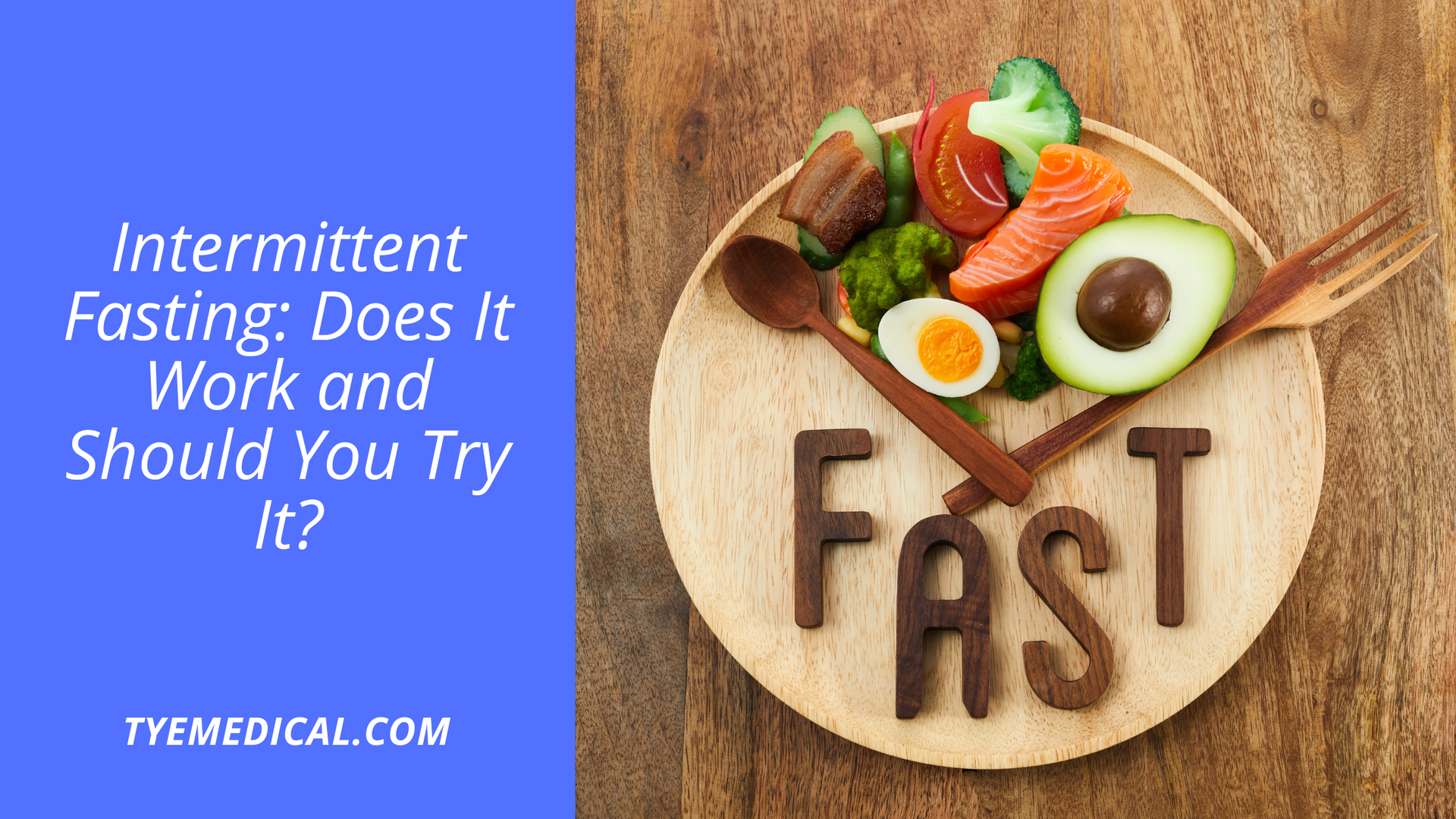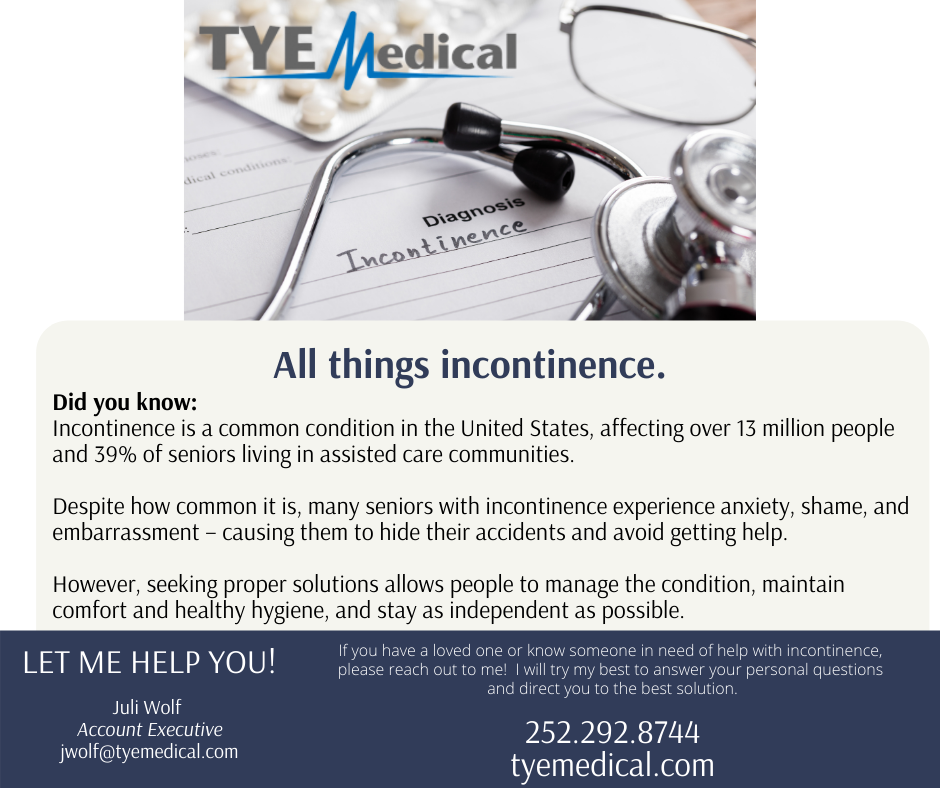Intermittent Fasting: Does It Work and Should You Try It
Tye Medical Incontinence Products
For more information about the author, click to view their website: TYE Medical
Dec 10, 2024
Florida - Southwest
Email US
Click to Email UsThe idea of fasting has been around for centuries and typically has a religious context and purpose. But recent trends have revamped and repackaged it to include three primary types of intermittent fasting. Intermittent fasting is a term that describes eating patterns with alternating periods of abstaining from food and eating. Traditional fasting often includes not eating for 24 hours or even days before resuming regular eating again. But intermittent fasting allows you to go without eating for shorter periods more frequently. And this is most often for the purpose of weight loss.
But questions abound. Does it work? Is it safe and healthy? What are the drawbacks? And of course, which type of intermittent fasting is best for you?
3 Main Types of Intermittent Fasting
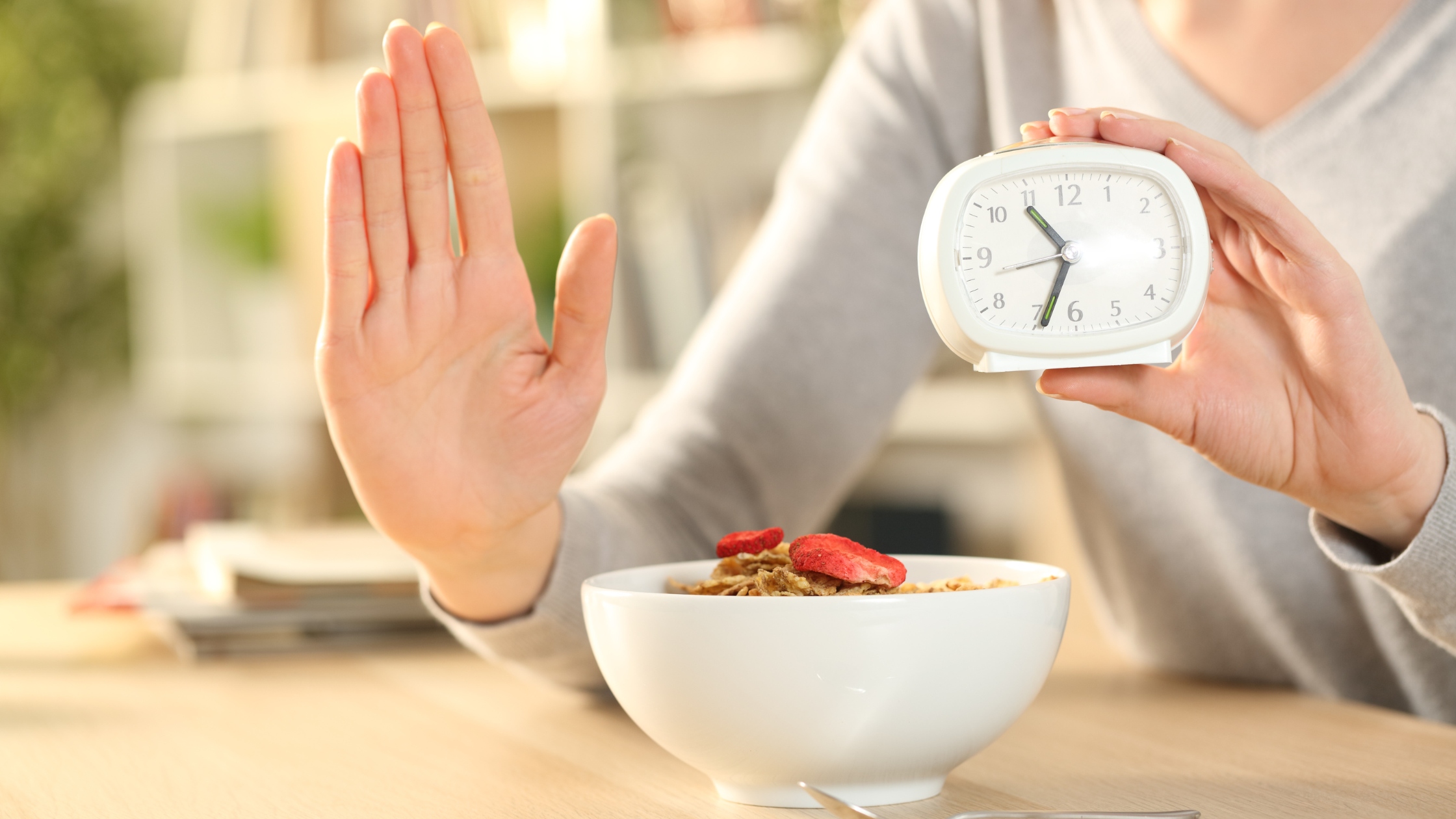
These fasting methods differ according to the length and frequency of the fast.
The 5:2 diet or modified fasting
This approach involves fasting for two non-consecutive days per week and eating normally for the other five days. This slashes a load of calories from your diet provided that you don’t consume twice as much on your regular eating days.
Alternate day fasting
This method alternates between a fasting day and a regular eating day. So, you eat for a day, and then fast for a day. This is more extreme than the 5:2 method as you will fast for 3-4 days per week.
Time-restricted eating
This type of intermittent fasting gives you a specific “eating window” that ranges from 4 to 12 hours. Eating windows are followed by periods of fasting that last for 12 to 20 hours. The idea is that during your eating window there are no calorie restrictions. It is the most popular approach.
Time-Restricted Eating Methods
There are several combinations for time-restricted eating. The most popular and most recommended is the 16:8 pattern. When you follow this approach, you eat during an eight-hour window and fast for 16 hours. Of course, about half of these fasting hours will be while you sleep.
Circadian Rhythm and Intermittent Fasting

How does fasting affect your body’s circadian rhythm? Also known as the circadian “clock,” circadian rhythm is your body’s 24-hour metabolism cycle that controls sleep cycle, mood regulation, blood pressure, and hormonal balance. Your daily exposure to light and dark, eating habits, and meal timing all affect circadian rhythm.
Continuing research suggests that the length of your eating window affects circadian rhythm. Specifically, lengthy eating windows ranging from 12-15 hours daily are more disruptive and increase your risk of cancer, heart disease, and type 2 diabetes. This is largely because a lengthier eating window often means a larger food and calorie intake overall, which leads to weight gain.
This means that the idea isn’t to “starve” yourself or seriously restrict calories but to shorten your eating windows and shrink your general calorie intake to a more needful level. Your overnight fasting period is a key factor in intermittent fasting. In essence, you’re extending that period of fasting by either starting your eating window later in the day or ending your eating window earlier in the evening. Your body already fasts for (hopefully) 6-8 hours in a 24-hour period.
What Are the Benefits of Intermittent Fasting
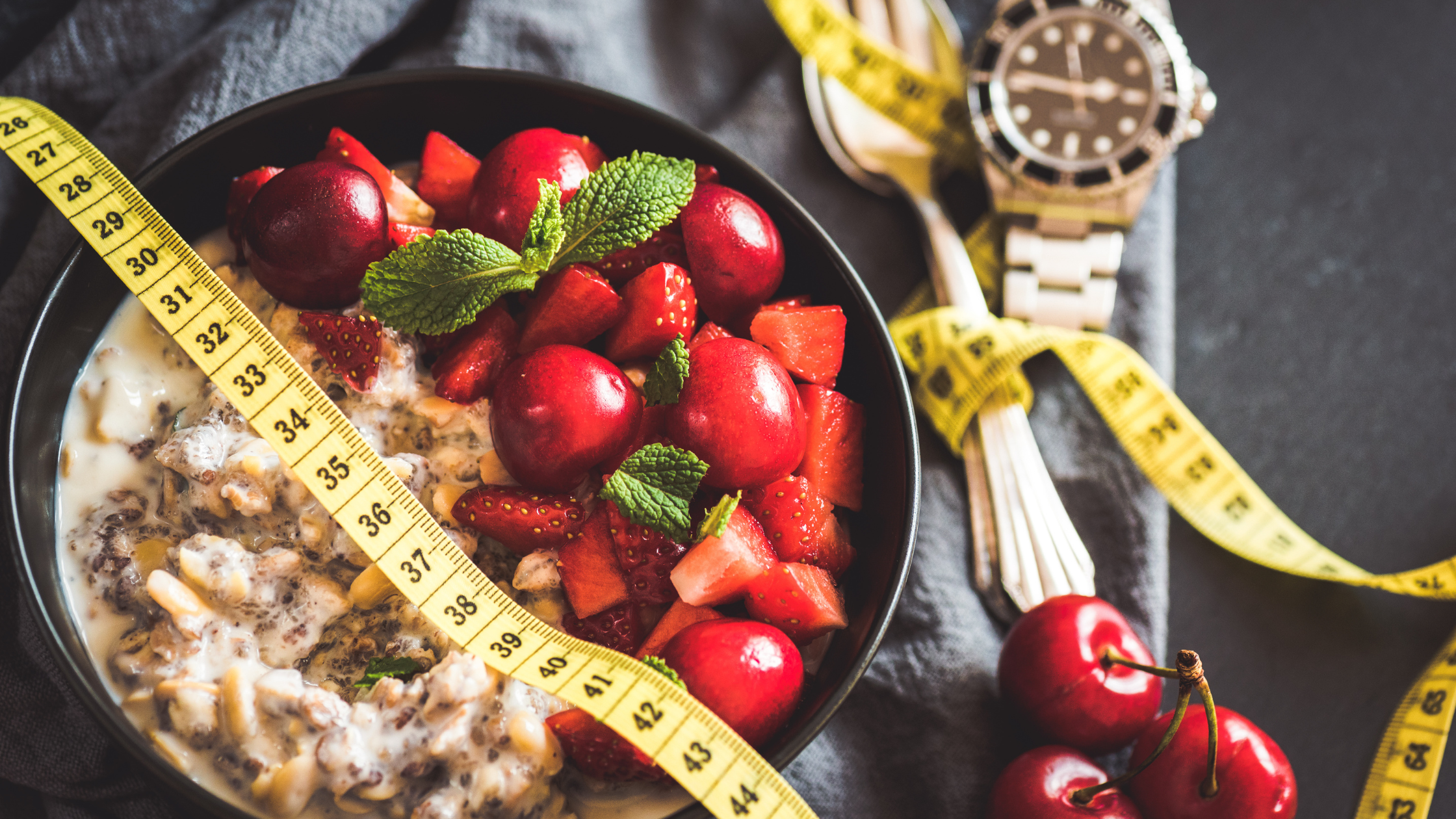
You can expect to experience benefits from intermittent fasting if you abstain from eating for at least 12 hours. But some experts claim 16 hours of fasting is the minimum. But it’s a generally accepted principle that fasting for 12-36 hours cleanses your liver of glycogen stores (stored form of glucose), alters your metabolic processes in positive ways, and positively affects your health overall.
Here is the breakdown.
1. Improved Cholesterol Levels
Both human and animal research reveals positive impacts on cholesterol levels. Intermittent fasting can reduce total cholesterol, LDL cholesterol, and triglyceride levels. It also can increase HDL or “good” cholesterol.
High cholesterol puts you at risk for heart disease. This is another indicator that intermittent fasting may be good for your general health and not only for your waistline.
2. Blood Sugar Control
Intermittent fasting can increase insulin sensitivity and reduce insulin resistance, which improves blood sugar control. This means lower fast blood sugar and A1c levels. Some research suggests intermittent fasting for men with type 2 diabetes may decrease the need for insulin therapy.
3. Weight Loss
Most of the studies of intermittent fasting center on weight loss. According to several studies, intermittent fasting results in average weight loss of between 3-7% of body weight in about eight weeks.
According to one study, a 14:10 eating pattern where you fast for 14 hours and eat for 10 hours daily can reduce your risk factors for metabolic syndrome which often leads to chronic conditions such as type 2 diabetes, cardiovascular disease, and high cholesterol. This is because intermittent fasting can decrease body fat percentage, visceral fat, and overall waist size.
4. Other Health Benefits
Intermittent fasting that reduces your evening calorie consumption and increases your overnight fasting period may lower overall inflammation, reducing your risk of breast cancer and other inflammation related conditions.
Research is ongoing concerning the effect of intermittent fasting on length of life and Parkinson’s disease.
Possible Negatives for Intermittent Fasting
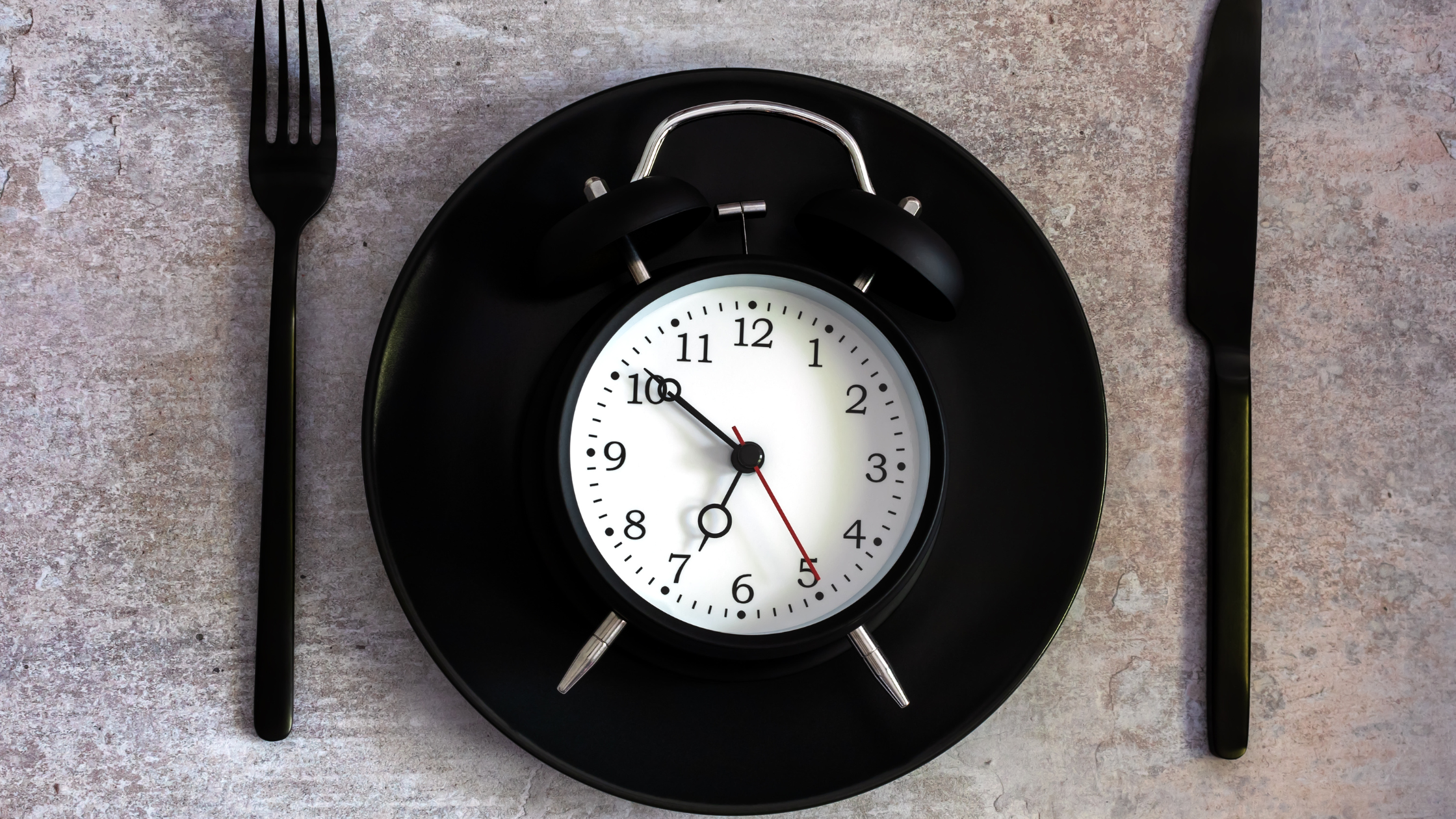
Potential negatives always exist for the health-related choices you make. So let's take a look at a few downsides of intermittent fasting.
Side Effects of Intermittent Fasting
For the most part, intermittent fasting benefits weight loss, heart health, and metabolic health, but some negative side effects may exist for some people, including:
- Increased thoughts about food
- Increased hunger
- Poor mood
- Increased irritability
- Fatigue
- Fear of losing control around food
- Difficulty concentrating
- Overeating during eating windows
If any of these side effects become burdensome or create additional problems, intermittent fasting may not be best for you.
Lack of Quality Research
Research on intermittent fasting is ongoing, but most of the current studies are based only on animal research. Little long-term human research findings are available. A review of the evidence found that of the 104 health benefits claimed, only six of them were supported by acceptable research. This means that we must stay tuned for reliable understanding about the benefits and drawbacks of intermittent fasting.
Alternatives to Intermittent Fasting
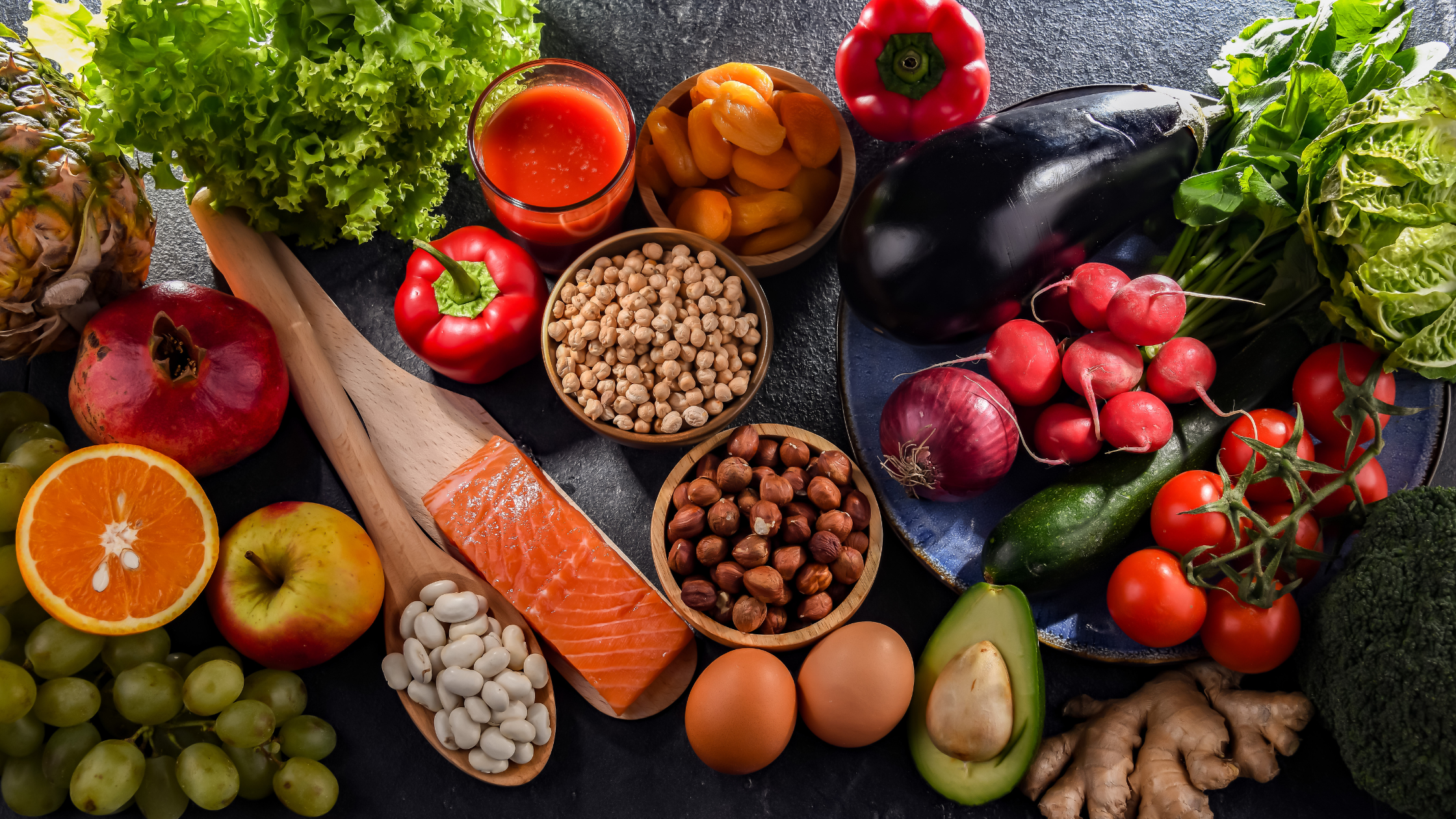
Weight loss related benefits abound, and there is more than one way to achieve this goal. Here are some additional options that may work better for you.
Calorie Restriction
You can also promote weight loss and overall health when you reduce your calorie-intake by 25% daily. You can do this without changing your mealtimes. Some studies support the idea that weight loss from intermittent fasting has no greater impact on health than a traditional calorie restriction diet.
However, an important caveat may be that people tend to stick more with an intermittent fasting method for the long term as compared to a traditional calorie restriction diet. In the long term, a form of intermittent fasting may be more sustainable for some people.
This is likely a matter of convenience. With intermittent fasting, you don’t need to put tons of thought and planning into your meals. Obviously, you aim to consume generally healthy foods, but there aren’t a lot of rules or restrictions other than your limited eating window. Some may find this more manageable than counting calories throughout the day and relying heavily on meal planning and preparation.
The Mediterranean Diet
Based on the traditional eating patterns in the Mediterranean region, the Mediterranean Diet has gained great renown and a religious following. It is one of the most often doctor recommended diets. Research suggests that following this diet for about five years can reduce your risk of heart attack and stroke by almost 30%.
It can also help protect against colorectal cancer and Parkinson’s disease. And you can accomplish these benefits without undergoing routine periods of fasting.
Final Thoughts on Intermittent Fasting
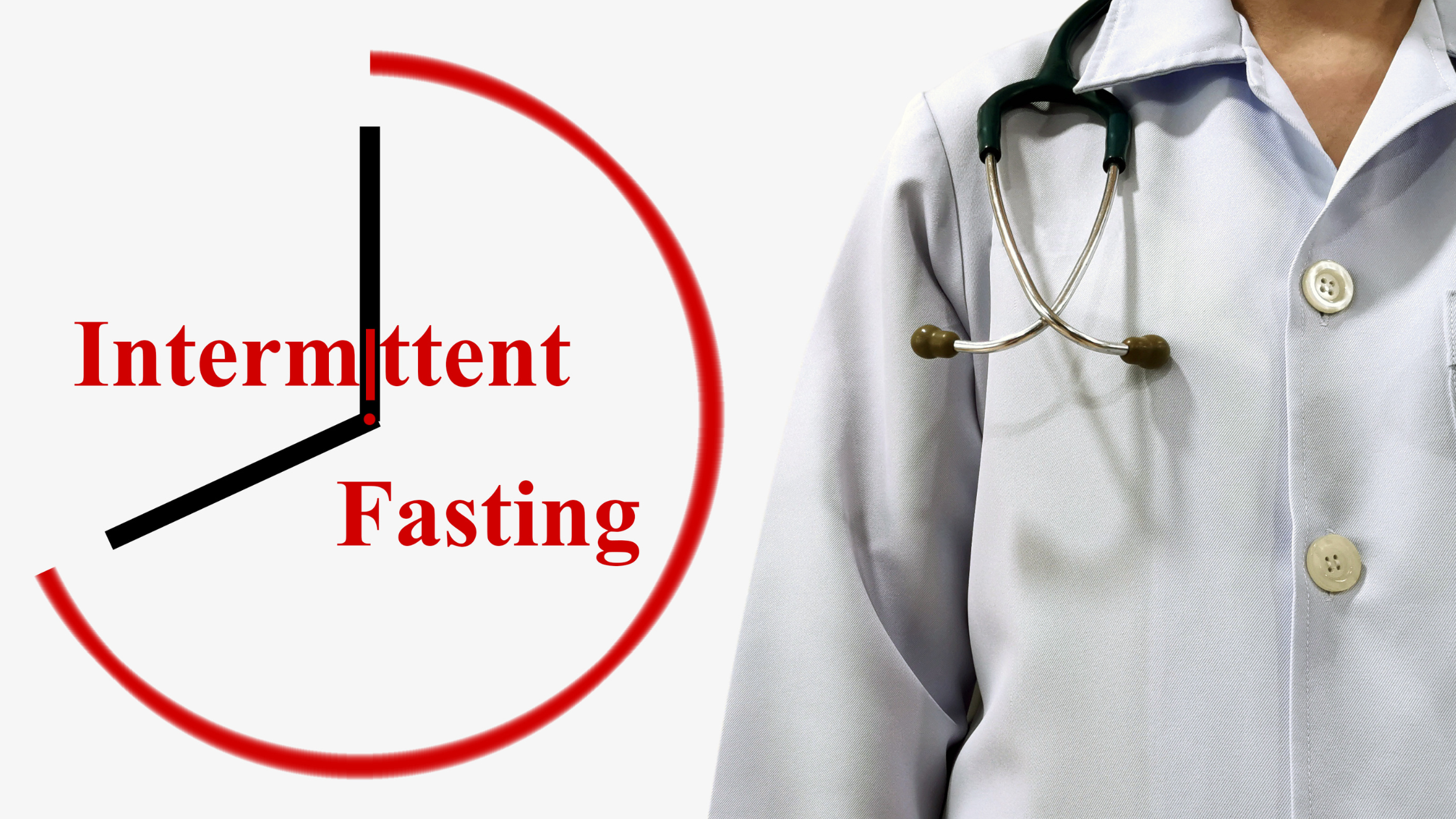
Intermittent fasting is a way to boost health and lose weight. It focuses on fasting periods and eating windows with the goal of overall calorie reduction. This can positively impact metabolism and lead to weight loss, which itself helps to prevent a host of obesity-related chronic diseases.
One of many of the appeals of the intermittent fasting approach to health and weight loss is that there are a variety of methods to choose from, no diet plan to follow, no calorie restrictions, and no subscription plan. It is also flexible as you can shift your eating window to a time of day when you are least hungry and are ultimately extending your overnight fast.
If you’re not a breakfast eater, you can extend your fast and begin your eating window at lunch time. A popular intermittent fasting method is the 16:8 pattern where you limit your eating window to eight hours per day and fast for the other 16, including your overnight fast.
Ultimately, it’s about what is best for you and what works for your body. Intermittent fasting isn’t for everyone. If your body responds well, find an optimal eating window for your lifestyle and health.
But if you find that intermittent fasting isn’t the best approach for your body and health, then consider alternatives that can be just as effective for health and weight loss.
Read more about intermittent fasting and how to get started. Intermittent Fasting for Beginners: 4 Methods to Consider.
TYE Medical offers premium incontinence products in a variety of sizes and absorbency levels. Shop our online store for free and discreet shipping on all orders.
- To view the original version of this article visit tyemedical.com/blog/intermittent-fasting-does-it-work-and-should-you-try-it/
- Seniors Blue Book was not involved in the creation of this content.
Other Articles You May Like
Functional Transformation Mobile Rehab Expands Northward to Serve Seniors in Greater Tampa Bay
Compassionate, In-Home Therapy Services Now Reaching More of Floridas West CoastFunctional Transformation Mobile Rehab, Floridas trusted provider of mobile therapy services, is proud to announce the expansion of its service area north now reaching residents up to just below Tampa International Airport. This growth allows them to offer expert in-home therapy to seniors and adults in Ellenton, Palmetto, Ruskin, Sun City Center, Apollo Beach, Riverview, Gibsonton, and parts of Town N Country, bridging the gap between Sarasota and the greater Tampa area.As the senior population across Florida continues to rise, so does the demand for quality, convenient healthcare services that promote independence and support aging in place. Functional Transformation Mobile Rehab (FTMR) answers that call with certified, personalized therapy provided in the comfort of patients homes.Why This Expansion MattersMany seniors face mobility challenges, chronic conditions, or post-surgical limitations that make traveling to outpatient clinics difficult or even impossible. FTMR eliminates these barriers by bringing certified therapists directly to patients' homes, offering a range of services tailored to meet individual health goals.From Sarasota to Tampa, patients will benefit from:In-home Physical TherapyOccupational TherapyCertified Lymphedema TherapyWound Care by Wound Care Certified CliniciansDurable Medical Equipment (DME) Support and Compression GarmentsThe ability to receive care at home not only enhances recovery and comfort but also increases consistency and outcomessomething particularly critical for seniors managing long-term conditions.Medicare PatientsFunctional Transformation Mobile Rehab is proud to be a Medicare-approved provider, making expert therapy services more accessible for those on a fixed income. With Medicare covering medically necessary therapy services under Part B, eligible patients can receive care with little to no out-of-pocket cost, depending on their deductible and secondary insurance. This is a crucial benefit for seniors who need rehabilitation after hospital stays, surgeries, or ongoing management of conditions like arthritis, balance disorders, stroke, or lymphedema.For families and caregivers, knowing that their loved one can receive certified, licensed therapy services covered by Medicare offers both peace of mind and financial relief. Please keep in mind that Functional Transformation Mobile Rehab follows Medicare guidelines, but cannot guarantee coverage.Specialized Care for Lymphedema and DME FittingsOne of the standout specialties of FTMR is Complete Decongestive Therapy (CDT) for lymphedema. Patients dealing with swelling, heaviness, or limb discomfortoften due to cancer treatment, venous insufficiency, or other chronic conditionsbenefit from a comprehensive approach that includes manual lymphatic drainage, exercise, skin care, and compression therapy.FTMR will measure, order, and fit your custom compression garments. These garments help patients maintain results from therapy, reduce recurrence, and improve quality of life.FTMR offers access to high-quality brands including:mediJuzoJOBSTSigvarisPatients are guided through proper usage and educated on maintaining their garments, empowering them to manage their condition long-term.Meet the Team Behind the CareAt the heart of Functional Transformation Mobile Rehab is James Ferrara, OTR/L, CLT, WCC, a seasoned Occupational Therapist and Certified Lymphedema Therapist with over two decades of experience in both outpatient therapy and home health settings. He is also Wound Care Certified, allowing him to serve patients with chronic or complex wounds safely and effectively.James and the FTMR team approach every case with compassion, clinical excellence, and a deep understanding of the unique needs of each patient. Therapy sessions are customized, one-on-one, and built on trustfar from the rushed or impersonal care that some may experience in traditional settings.With a patient-first philosophy and a mission rooted in helping people regain function, mobility, and confidence, FTMR is redefining what healthcare at home can look like.Serving With Integrity and CompassionFunctional Transformation Mobile Rehab operates with one goal in mind: to bring expert care to those who need it, without sacrificing comfort, dignity, or independence. Their expansion into the greater Tampa area means more seniors can now experience therapy that truly meets them where they arein every sense.Whether you live in Apollo Beach, Sun City Center, Riverview, Gibsonton, or any area in between Sarasota and the Tampa Airport, FTMR is now your local resource for in-home rehabilitation care.Schedule an Appointment or Make a Referral TodayIf you or someone you love could benefit from therapy at home, or if youre a provider looking to refer a patient to a trusted therapy partner, Functional Transformation Mobile Rehab is ready to help.Learn more or refer online at:https://suncoastftmrehab.com/in-home-therapy-expansion-tampa-bay/Experience the difference of Functional Transformation Mobile Rehabwhere healing happens at home.
Prevent the Crisis
Hello!What if you could prevent the emergency instead of reacting to it? Most long-term care decisions dont come from thoughtful planning they come from panic.A fall, a hospitalization, or a sudden cognitive decline forces families to scramble for support, often leading to costly, full-time care options like assisted living or home health services.But what if there was a better way? A way to act early, avoid burnout, delay decline, and even prevent crises altogether?Thats the power of adult day!A Different Kind of Long-Term CareMost people associate long-term care with nursing homes, assisted living or 24/7 in-home care services that often enter the picture after something has already gone wrong.These are reactive solutions: many wait until Mom is found wandering down the wrong street, or Dad fell and cant get off the floor, before making a move.Adult day care flips that model on its head.Its a proactive approach designed to support older adults and their caregivers before things reach a breaking point. It bridges the gap between independence and full-time care, keeping seniors safe, active, and connected while giving family caregivers the critical relief they need.The Hidden Cost of WaitingWaiting until a crisis hits isnt just stressful its expensive.Emergency room visits, rehab stays, and hospitalizations cost thousands. Family caregivers are often forced to . . . (click here to read the full article).Many Blessings,Kris Chana, FounderActivAge
A Guide to Geriatric Care Managers in Manatee, Sarasota, and Charlotte Counties
Providing Essential Support for Seniors and Their FamiliesAs seniors age, many families find themselves navigating the complexities of health care, daily living needs, and overall well-being. In these situations, a Geriatric Care Manager (GCM) can be a valuable resource. GCMs are trained professionals who assist families in managing the care of older adults, especially those with complex health conditions. They help ensure that seniors receive the right care, at the right time, in a way that aligns with their needs and goals.If you are a resident of Manatee, Sarasota, or Charlotte Counties in Florida, this guide will explore the important role of Geriatric Care Managers and how they can assist you and your loved ones in managing senior care effectively. What is a Geriatric Care Manager?A Geriatric Care Manager is a health and human services professional who specializes in aging and the care needs of seniors. These professionals are often social workers, nurses, or other health care providers with advanced training in geriatric care. Their main job is to help families manage the care of elderly relatives by assessing their needs, creating care plans, and coordinating services across a variety of healthcare providers.Geriatric Care Managers are particularly helpful when families are dealing with complex medical needs, or when there are multiple care providers involved in a senior's health care plan. They take the guesswork out of coordinating care and help families ensure that their loved ones are receiving the most appropriate and effective services. How Can a Geriatric Care Manager Help?Geriatric Care Managers provide a wide range of services tailored to the unique needs of older adults. Some of the key areas where they assist include:Assessment and Care Planning: GCMs conduct comprehensive assessments of a senior's physical, emotional, and social needs. Based on this, they develop personalized care plans to meet those needs.Coordinating Care: One of the key roles of a GCM is to coordinate all aspects of a seniors care. This might involve managing doctors appointments, overseeing in-home care services, arranging for transportation, or ensuring that medication is taken properly.Advocacy: Geriatric Care Managers act as advocates for the elderly person, ensuring that their needs are communicated effectively to healthcare providers, family members, and other involved parties.Family Support and Education: Many families are not familiar with the intricacies of senior care. A GCM can provide educational support to help family members understand the aging process, available resources, and how to manage long-term care.Crisis Management: When a sudden change in health occurs, a GCM is trained to manage the situation and can step in quickly to arrange for the appropriate care. Why Do You Need a Geriatric Care Manager in Manatee, Sarasota, and Charlotte Counties?Living in Manatee, Sarasota, or Charlotte Counties offers seniors the benefits of a vibrant and supportive community, but the complexities of aging can still pose challenges. With a growing senior population in these counties, the need for professional help managing senior care has never been greater.Here are a few reasons why a Geriatric Care Manager can be an invaluable resource in the local area:Access to a wide range of resources: In a bustling area like Sarasota, Manatee, and Charlotte Counties, there are numerous healthcare providers, facilities, and support services. A GCM is familiar with the best local options and can navigate these choices to create the most effective care plan for your loved one.Managing long-distance caregiving: Many families in Sarasota, Manatee, and Charlotte Counties find themselves in a situation where the primary caregiver is located out of state. A GCM can be a trusted local presence to ensure that care is being delivered properly.Specialized care options: Whether your loved one requires assistance with chronic conditions such as dementia, or they need rehabilitation after an injury, a Geriatric Care Manager can guide you to the right services in the local area.Support with aging in place: Many seniors prefer to remain in their own homes as they age. A GCM can help set up home care services, safety modifications, and other supports that make aging in place a safe and viable option. How to Find a Geriatric Care Manager in Sarasota, Manatee, and Charlotte CountiesWhen choosing a Geriatric Care Manager, it is important to find someone who is experienced, knowledgeable, and a good fit for your family's needs. Here are some steps to take: Check credentials: Look for GCMs who are certified by the National Academy of Certified Care Managers (NACCM) or similar organizations. This ensures they have met professional standards and are qualified to offer services. Seek referrals: Ask for recommendations from healthcare providers, friends, or other family members who have worked with a GCM in the area. Evaluate experience: Its important that the GCM you choose has experience working with seniors who have the specific care needs of your loved one. Whether its managing chronic illness, cognitive decline, or simply providing assistance with daily activities, the right experience can make all the difference. Interview potential GCMs: Speak with the care managers you're considering to understand their approach to care, their availability, and their fees. Its important to find someone who you feel comfortable with and who understands your familys needs. For a list of trusted Geriatric Care Managers and other senior services in the Sarasota, Manatee, and Charlotte Counties area, explore the Seniors Blue Book directory: Browse Senior Resources in Sarasota, Manatee & Charlotte Counties Geriatric Care Manager Listings in Sarasota, Manatee &Charlotte Counties ConclusionA Geriatric Care Manager plays a crucial role in ensuring that seniors receive the care and support they need to thrive as they age. In Sarasota, Manatee, and Charlotte Counties, these professionals offer invaluable assistance to both seniors and their families, navigating the complexities of senior care, advocating for the elderly, and providing peace of mind. If you are considering a Geriatric Care Manager for your family, remember that you have a wealth of resources and options in the local area to help you make the best decision. Start your search today by exploring the Seniors Blue Book directory for trusted professionals who can guide you through every step of the aging process.
Local Services By This Author
Tye Medical
Incontinence Supplies , , Florida, 00000It takes collaboration of great minds, a great passion and great brand to successfully foster our global mission to empower the over 33 million Americans suffering from urinary incontinence and the many challenges it can bring to make a smart product choice as their incontinence solution. We are honored to showcase our product and to continuously raise the standards of our customer experience, improve the quality of their life andEmpower their Health.Inspiring a healthier life for everyone, everyday. Contact Julie Wolf today your local Tye Medical Professional in Florida directly at252-292-8744
Tye Medical
Assistive Devices , , Florida, 00000It takes collaboration of great minds, a great passion and great brand to successfully foster our global mission to empower the over 33 million Americans suffering from urinary incontinence and the many challenges it can bring to make a smart product choice as their incontinence solution. We are honored to showcase our product and to continuously raise the standards of our customer experience, improve the quality of their life andEmpower their Health.Inspiring a healthier life for everyone, everyday. Contact Julie Wolf today your local Tye Medical Professional in Florida directly at252-292-8744
TYE Medical
Incontinence Care , , Florida, 00000It takes collaboration of great minds, a great passion and great brand to successfully foster our global mission to empower the over 33 million Americans suffering from urinary incontinence and the many challenges it can bring to make a smart product choice as their incontinence solution. We are honored to showcase our product and to continuously raise the standards of our customer experience, improve the quality of their life andEmpower their Health.Inspiring a healthier life for everyone, everyday. Contact Julie Wolf today your local Tye Medical Professional in Florida directly at252-292-8744
